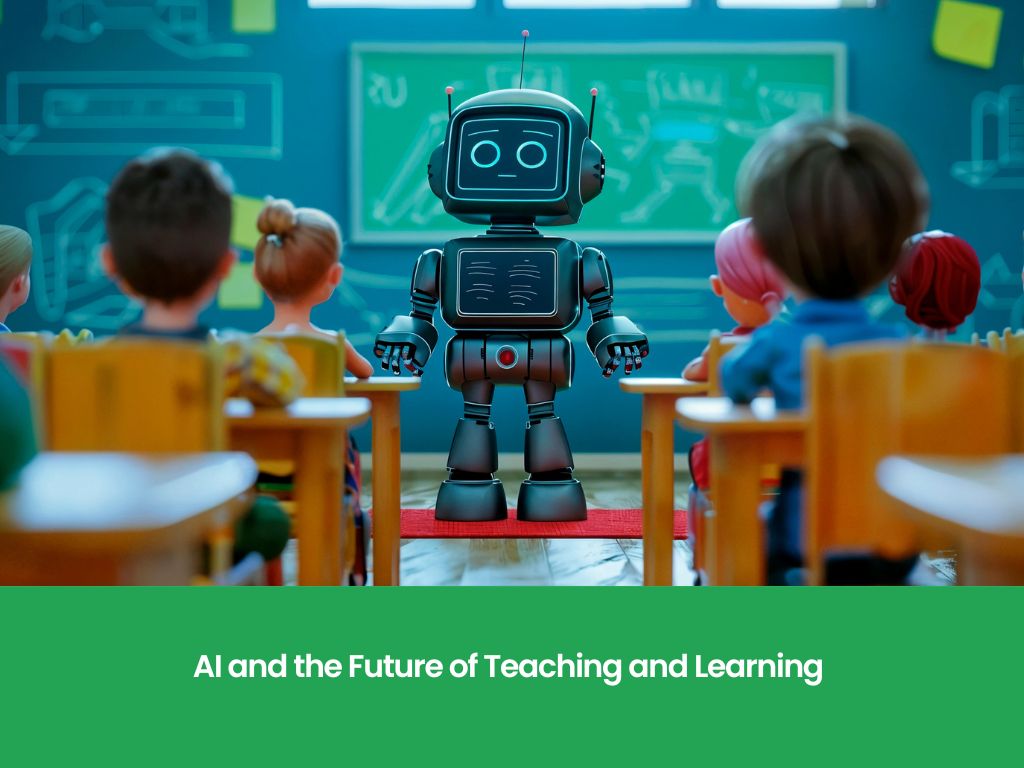Introduction
In the fast-changing world of today, technology is touching virtually every aspect of our lives. Among the most basic changes is a change happening in the sector of education, where Artificial Intelligence (AI) is transforming the form of learning and teaching in amazing ways. What used to be science fiction is now very much a reality—and it’s having a presence in classrooms worldwide.
From personalized learning paths to virtual teachers and smart content creation, AI is not a buzzword anymore—it’s a revolution. But what does AI bring to education, you may ask? Is AI replacing teachers? Or is it enhancing their capabilities? In this blog, we talk about how AI is transforming education, the benefits it has to offer, and also the challenges the industry will have to deal with.
1. Familiarity with Artificial Intelligence in Education
Artificial intelligence learning is the use of intelligent machines or computer programs to perform tasks that previously were performed by humans—like grading, answering questions, or even offering one-on-one feedback. They learn from data, get better with time, and respond in a way that encourages learning.
Some typical examples are:
- Smart tutoring systems that walk students through step-by-step.
- Computer programs for objective test scoring.
- Predictive analytics to identify at-risk students.
- Chatbots for 24/7 academic support.
2. How AI Is Changing Pedagogy
AI isn’t coming to substitute instructors—it’s coming to augment them.
a) Individualized Instruction
One of the biggest strengths of AI is that it can tailor lessons to the individual learning speed and learning style of each and every individual. Conventional classrooms for the most part have an issue with one-size-fits-all. AI knows what is ideal for each student and adjusts accordingly such that no one is left behind.
b) Smart Content Generation
Teachers can use AI to create interactive, engaging study content. For instance, it can transform textbooks into digital form with simulations, flashcards, and summaries. This interactive form of content is simple to learn even complex topics.
c) Automated Administration Tasks
Teachers spend their hours on paperwork—taking attendance, grading, monitoring progress. AI can already do much of that, leaving teachers free to do what they’re supposed to be doing: teaching.
3. The Student’s Edge: Learning Smarter, Not Harder
Artificial intelligence platforms support students by providing:
a) Instant Feedback
Instead of having to wait days for comments, AI can grade responses in real time, which means students can find out about errors instantly and improve accordingly.
b) Learning Analytics
Students can track their own progress through dashboards that expose strengths, weaknesses, and improvement recommendations.
c) Language Translation and Accessibility
For learners across different linguistic backgrounds or disabilities, speech-to-text, real-time translation, and screen readers are AI innovations that offer inclusive learning.
4. Progressive Methodology of Gyan Ashram School
Indian schools are slowly adopting AI in its many forms, and Gyan Ashram School, being among Top School in Jaipur, is leading the way. Through the adoption of digital learning platforms and encouraging teacher training with AI tools, the school is making the student not a consumer of technology—but a future producer.
5. Challenges on the Road Ahead
Even with all the benefits, education AI comes with its downsides.
a) Privacy Issues
With enormous amounts of information being collected–from academic achievement to behavioral patterns–there is the possibility of abuse or misuse. Student confidentiality and data privacy take top priority.
b) Equity in Access
AI applications usually cost a lot and need strong internet connectivity, making them unaffordable for everyone, including not all students and schools. This is also raising issues about an online divide that may perpetuate educational inequality.
c) Dependence on Technology
Excessive dependence on AI can curtail human interaction, which is critical to learning soft skills such as empathy, team spirit, and communication. Teachers have a foundational role in personality development—knowledge transmission alone is not enough.
6. The Teacher’s Role in the Age of AI
Instead of dreading AI, it is essential that teachers understand it as an ally to the learning process. The teacher today is evolving from being an individual source of information to being a facilitator, mentor, and guide.
AI performs the “how” and the “what” of learning. Teachers address the “why”—contextualization, moral education, emotional intelligence, and critical thinking skills that computers are not capable of imparting.
Professional development opportunities are required to make teachers feel at ease using AI tools and to unlock their full potential in the classroom.
7. What The Future Holds
Imagine a classroom where:
- Each student is assigned an individualized curriculum.
- Immediately, the teachers are informed of student struggles.
- AI teachers answer questions at any time of day.
- Virtual reality and artificial intelligence are interactive learning environments.
This is not a vision for the future—it’s a near-future reality. Early adoption of AI by schools is creating foundations for smarter, more inclusive, and more effective education.
8. Final Thoughts
AI is not a technology—it is a revolution. Although it cannot replace the human imagination, experience, and touch of a teacher, it is certainly capable of enhancing their ability to teach more effectively. The challenge lies in using AI responsibly—innovation and ethics, and technology and humaneness.
Gyan Ashram School, being one of the Best Schools in Jaipur, is a beacon of hope for how vision-driven schools must evolve and embrace this new age. By combining old values with new technology, they’re shaping the minds—and the future—of the coming generation.
The future of teaching and learning isn’t only online. It’s smart, responsive, and student-led—and it’s already here.

